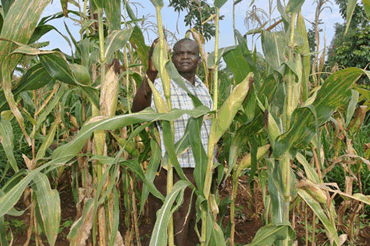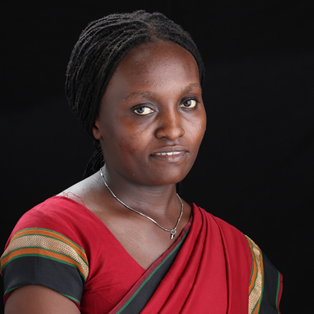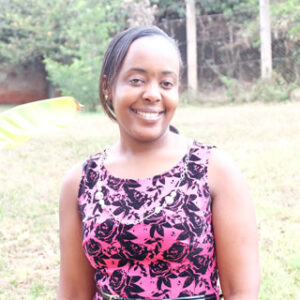- by AATF Africa
I am a geography and agriculture teacher at Sinyolo Secondary School and also a small-scale farmer in Kisumu North district, Nyahera division, Sidika village. I have about one and a quarter acres of land on which I grow maize, beans, groundnuts and bananas.
I got to know about the StrigAway Imazapyr Resistant (IR) maize that controls the Striga weed in 2005. I read about it in the newspaper and also heard it being discussed in the area by an organization known as Nyanza Center for Destitute headed by Willliam Bodo. I got interested because Striga weed infestation is a problem in this area.
However, I did not start planting IR maize until 2008. I started with samples that I was given by Bodo. Unfortunately the rains were poor that season and the seed didn’t do well and though I did not get much yield I noticed that Striga had reduced on my farm. This aspect of Striga reduction got me interested in the technology and I decided not to give up. I started buying and planting the IR maize instead of waiting for samples from Bodo.
I plant maize on about three-quarter acres. Out of this, a quarter acre is on IR maize. I also plant other maize varieties. I practice some sort of rotation and it seems to work. Where I plant IR maize one season, I plant another variety the next season. The other maize varieties do well since the Striga has been reduced during the previous season. IR maize is very effective in areas where there is Striga and the yield is better. However when there is no Striga other varieties on the market that are developed to increase yield do much better. From the rotation I have been doing I know that the IR maize has been developed for controlling Striga and ensuring one gets a harvest whereas they would have got none. I also now know that other varieties may be able to increase yield but not control Striga and yet these varieties cannot do well in the presence of Striga.
I have also noted that the IR maize is a bit tolerant to drought and does not lodge when it is windy. The grains are very palatable especially when roasted or when cooked as Ugali (stiff mixture of maize flour and water). The maize I plant is normally for home consumption and I don’t sell any. I also don’t ever need to buy maize. This helps me a lot as I am responsible for providing for my immediate and extended family and we eat Ugali twice a day.
During the 2011 long rains I harvested five sacks from the IR maize seed I planted on a quarter acre of land compared to the one bag I got previously from the same piece of land. From my experience one still needs to engage in the necessary land husbandry practices like using fertilizer when planting and for topdressing and weeding for the technology to be effective. These are things I do and as a result I can say I have rid my farm of Striga.
Despite the above successes there are a few challenges we are facing with the IR maize seed and we would like to urge the partners involved in this project to address. For one the seed is small in size and sometimes is broken and one has to select the whole ones for planting. Sometimes the germination is not very good. These are aspects that can discourage farmers from planting the IR maize that need to be looked into.
I would advise other farmers who have a Striga problem to try the IR maize as it is very effective in controlling the weed. Previously I tried to control Striga by uprooting the weed and burning it and also using wet cow dung manure which only reduces the Striga but does not completely eliminate it.




















































































